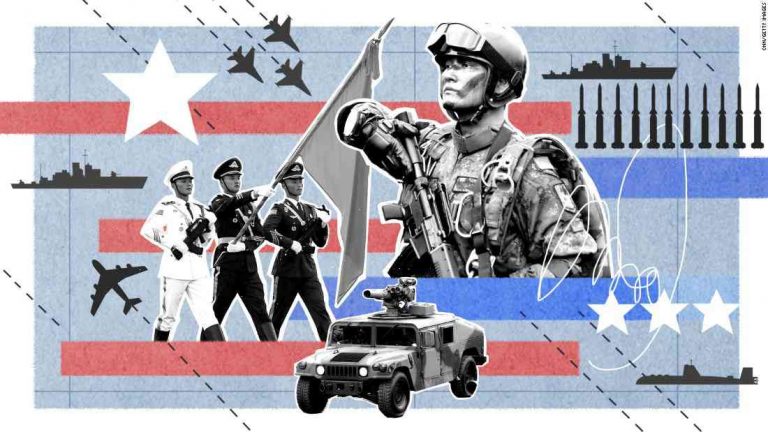Written by Staff Writer
This article was originally published in February 2016. It has been updated.
Amid Asia’s economic revival, it has long been a struggle to get the region’s states to collaborate on a range of issues. In recent years, that’s been especially true regarding defence spending and defense agreements. While most of Asia’s militaries are taking steps to build up and modernize their forces, some countries are seeking to cement relationships with the United States that extend well beyond the realm of conventional defense exchanges.
The world watched recently as China, the US and Japan discussed the disputed islands in the East China Sea, while through a hotline known as the “Three Links,” Beijing, Tokyo and Washington are coordinating on responses to an increasingly tense situation in the region.
Now, some experts say that while these informal interaction and coordination are positives, they only serve to mask the deeper rifts within Asia — thus, potentially re-igniting regional discord over sensitive issues such as territorial claims and militarization.
Fissures
China’s military spending is poised to top $180 billion in 2017 — up about 30% on the previous year.
Major Aiyoshi Tanaka, director of Japan’s National Security Strategy Office, told reporters in January that Tokyo aims to increase military spending by more than 30% over the next five years.
Officials in Japan, a country with a history of territorial disputes with its neighbors, say that the US-Japan alliance remains the pillar of security in the region.
But some in Japan argue that new military spending should be focused on cybersecurity.
In December, The Wall Street Journal reported that some in Japan advocated spending an additional 10 trillion yen ($87 billion) to modernize its military, which they believed was at risk of losing its deterrent capabilities.
Activists from Japan’s United to Bring Democracy to North Korea sat inside a giant inflatable “submarine boat” on February 19, 2017, in front of the building housing the military “to protest Japan’s militaristic policy toward the North,” during a rally in front of the Bank of Japan headquarters in Tokyo. Photo credit: Shizuo Kambayashi/AP
Nuclear issues
South Korea, meanwhile, is facing its own set of nuclear crisis following the deployment of a controversial US anti-missile system in June last year, and the election of President Moon Jae-in has raised questions about whether he’ll strengthen ties with the US.
A military test of South Korea’s ballistic missile defenses will be held on March 1, targeting North Korea’s nuclear tests, Yonhap News Agency reported.
While India, meanwhile, has been strongly establishing ties with Japan over the years — the two signed a defense cooperation agreement last August — it has also stepped up efforts to flex its military muscles.
It conducted a series of naval exercises in 2016 with the US, including the first joint naval exercise — Rim of the Pacific (RIMPAC) 2016 — since World War II.
India’s Defence Minister Manohar Parrikar looks at a map during a media briefing ahead of the 44th defense ministers’ meeting in Tokyo, Japan, April 21, 2015. Photo credit: Shizuo Kambayashi/AP
In an attempt to pursue what it has called “a rebalancing in military prowess” after decades of attracting Chinese and Russian arms shipments and seeking cooperation with China, India’s Defense Minister Manohar Parrikar unveiled a defense white paper late last year that outlined the country’s “new reality.”
“While China is a threat today, it is not for the moment a master of the region and a self-declared regional hegemon,” Parrikar said.
Indonesia’s military has also been getting tough with China over its presence in the Indo-Pacific. In February, the country filed a joint protest with China after the Chinese Coast Guard detained Indonesian naval vessel and towed it to a nearby Chinese port.
The relationship between China and the US was also in the spotlight after the P5+1 group of nations — the US, Russia, China, the UK, France and Germany — reached a nuclear deal with Iran.
Iran’s President Hassan Rouhani attends a news conference after a meeting with former Philippines’ President Benigno Aquino III, during the 8th ASEAN-China Conference, in the Philippine city of Cebu, southern Philippines, October 16, 2015. Credit: Aaron Favila/AP
Washington’s support for the country, one of the region’s leading state sponsors of terrorism, and the resulting consideration of the potential withdrawal of US forces from Southeast Asia has stoked concerns among nations in the region.
“The most important thing is that there is a greater multi-polar balance of power,” said Kirby. “I think a very powerful and influential United States does have a stabilizing effect on Asian geopolitics.”
